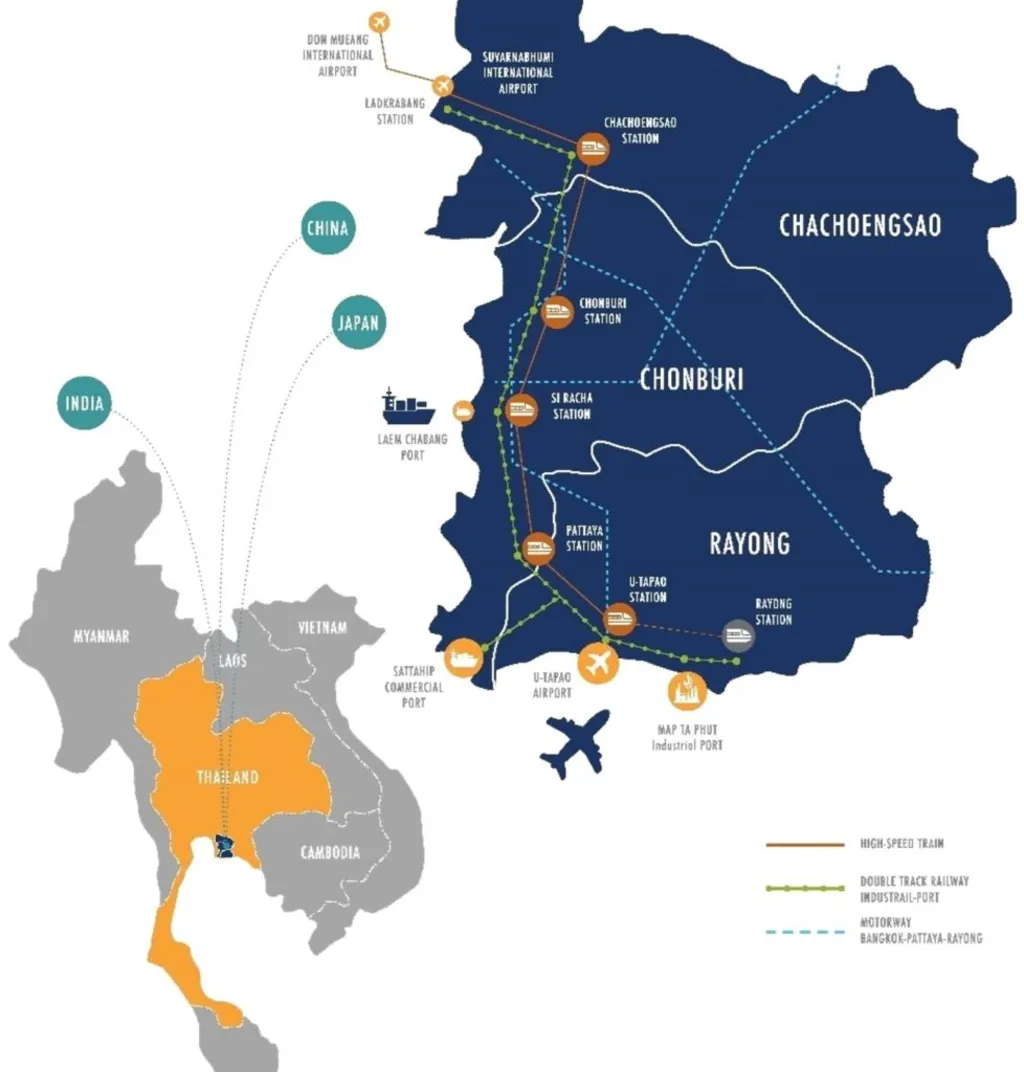Thailand’s Eastern Economic Corridor (EEC) is experiencing explosive growth. In just the first four months of 2025, 108 foreign companies invested in the EEC, or equal to a 40% year-on-year increase. These investments totaled THB 31.36 billion, accounting for 54% of Thailand’s total foreign direct investment during that time. This signals rising global confidence in Thailand’s EEC expansion as a key industrial and logistics hub in Southeast Asia. Let's take a closer look!
Rising Land Demand Reflects Market Momentum
Investor interest has triggered a sharp rise in property demand. In Rayong, one of the EEC’s core provinces, land prices jumped 43.5% year-on-year in Q1 2025. This spike is linked to manufacturing shifts, especially from companies relocating production from other regions into Thailand. It’s a clear sign: the EEC is becoming one of Asia’s hottest industrial zones.
Thailand’s EEC Expansion & Vision 2037: Smart City and Financial Hub

Thailand has bold plans for its future. A THB 1.35 trillion (US$44 billion) initiative aims to transform the EEC into a regional financial center and smart city by 2037. This long-term strategy will support 200,000 new jobs and contribute THB 2 trillion to the economy over the next decade. It’s a national move to future-proof the economy while boosting high-tech industries, urban innovation, and global investment.
Read Also: Thailand QR Cross-border Payments Connect ASEAN, Inclusion Ahead!
Thailand’s Manufacturing Muscle
Manufacturing is the backbone of Thailand’s economy, contributing 24.91% to GDP. The country excels in sectors like automotive, electronics, and food processing, and the EEC helps strengthen its industrial advantage. The growth of Thailand’s EEC expansion supports faster production cycles and lowers export times, making it a magnet for multinationals seeking a strategic base in Southeast Asia.
Major multinational investments are starting to roll in. China’s BYD is building a $490 million EV plant in Rayong, while Japan’s Toyota plans to invest $700 million in smart manufacturing facilities. Semiconductor firms like Intel and TSMC are also exploring EEC-based production hubs to diversify supply chains beyond China.
Thailand’s EEC Expansion: Logistics Boom Drives Regional Role
Thailand’s logistics market is also on the rise, with projections of a 5.98% compound annual growth rate (CAGR) from 2025 to 2033. This is driven by the surge in e-commerce, major infrastructure projects, and stronger intra-ASEAN trade. Thailand’s central location gives it natural access to neighbors like Vietnam, Cambodia, Malaysia, and Myanmar—creating a seamless flow of goods across ASEAN.
Read Also: How the Sudden Thailand–Cambodia Border Closure Disrupts Regional Supply Chains
Tapping Into ASEAN’s 650M+ Consumers
The EEC isn’t just about infrastructure—it’s about connectivity. ASEAN’s population of over 650 million people includes a fast-growing middle class: 245 million in 2024, expected to reach 415 million by 2030. Thailand is positioning itself as a gateway to this massive consumer base, thanks to projects like the Laem Chabang Port development and U-Tapao Airport expansion. These upgrades will link factories, supply chains, and consumers across borders.
The Future Is Regional, And It Runs Through Thailand’s EEC Expansion
Thailand's EEC expansion is more than a local economic plan. It’s a blueprint to turn Thailand into Southeast Asia’s logistics and manufacturing core, a hub to connect global investors with a thriving digital economy and hundreds of millions of consumers. With infrastructure in place, a booming industrial base, and visionary leadership, Thailand is laying the tracks for a new era of ASEAN-led growth.







